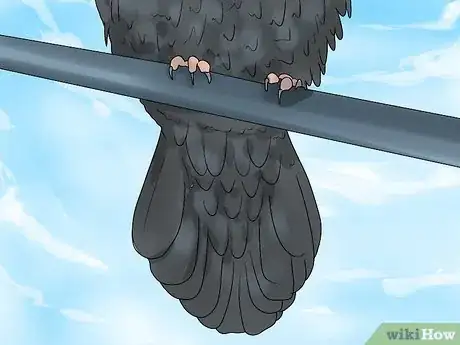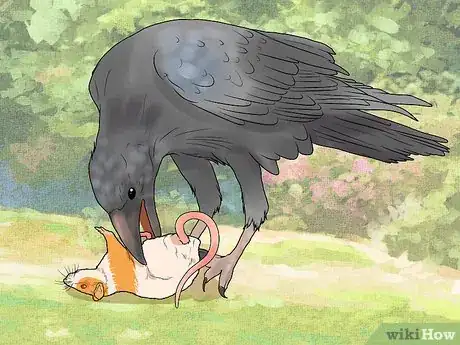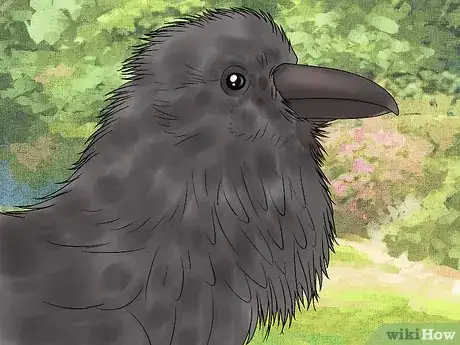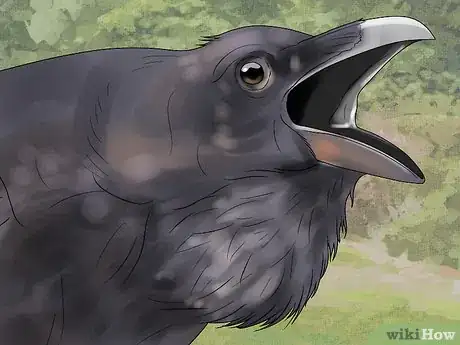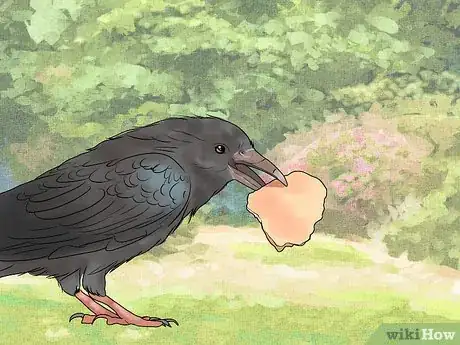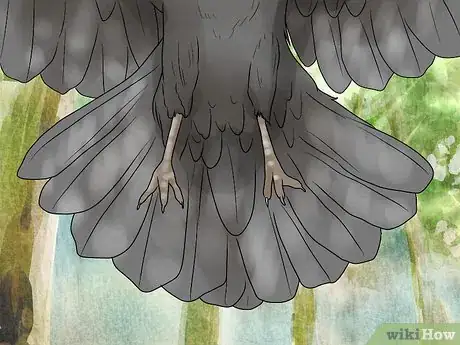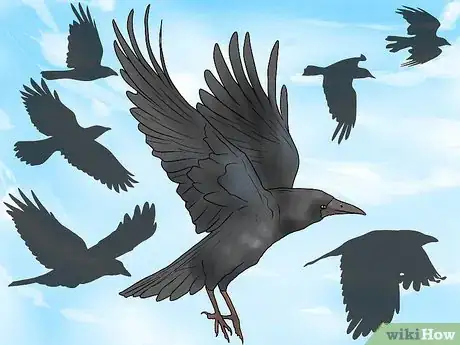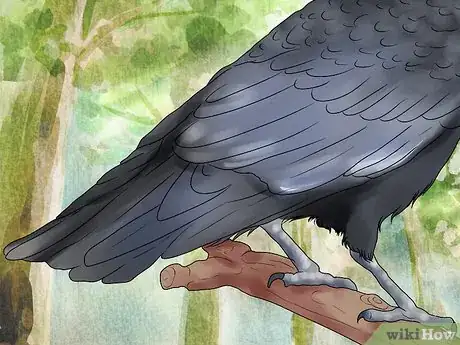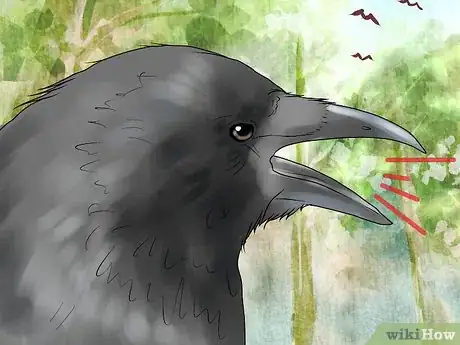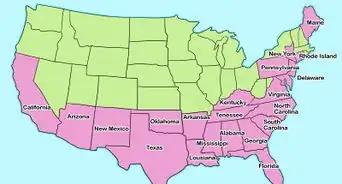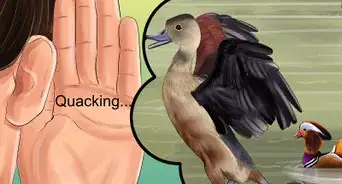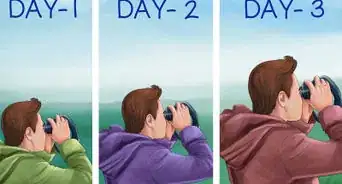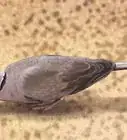This article was co-authored by Roger J. Lederer, PhD. Dr. Roger Lederer is an Ornithologist and the founder of Ornithology.com, an informative website about wild birds. Dr. Lederer has spent over 40 years teaching, studying, and writing about birds. He has traveled to over 100 countries to study birds. Dr. Lederer is an Emeritus Professor of Biological Sciences at California State University, Chico, and has been a Department Chair of Biological Sciences and Dean of the College of Natural Sciences. He has written more than 30 research papers and 10 books on birds and a textbook entitled “Ecology and Field Biology.” Dr. Lederer has consulted the BBC, National Geographic, National Public Radio, ABC News, the Guinness Book of World Records, and numerous other organizations and publications.
wikiHow marks an article as reader-approved once it receives enough positive feedback. In this case, 90% of readers who voted found the article helpful, earning it our reader-approved status.
This article has been viewed 51,901 times.
Although crows and ravens are in the same family of birds and look alike, they actually have some pretty big differences. To tell the difference between a crow and a raven, you’ll need to examine the bird and look at things like its size, feathers, and environment. You can also tell crows and ravens apart by the way they sound. Once you understand the differences, it’ll be simple to tell the 2 birds apart.
Steps
Determining if the Bird is a Raven
-
1
-
2Look for a 3.5–4 ft (1.1–1.2 m) wingspan. While ravens and crows are both black, they differ in size significantly. Ravens are typically much bigger than crows, with a larger body and wingspan. In fact, typically ravens are twice the size of crows.[3]
- On average, ravens are 24–27 in (61–69 cm) long.
Advertisement -
3
-
4Check if the bird is alone or in a pair. Ravens usually eat and fly solo or with one other bird, while crows usually fly around with a larger group of birds. Look at the bird and see if it is flying around with other birds or whether it solo or in a pair.[6]
- Two or more ravens grouped together is called an "unkindness."
-
5
-
6Listen for a croaking noise. Ravens make a low-pitched and guttural croak or noise that sounds like “gronk-gronk,” while crows make a more traditional “cawing” noise. If the noise that the bird is making is a lower pitched croak, it’s likely a raven.[9]
- Listen to raven calls on Youtube to help you identify the noise.
-
7See if you can hear a “whooshing” noise as the bird flies. Because of the added wingspan, raven’s will often make a “whooshing” noise when they fly. Take notice of whether you can hear the bird when it takes flight.[10]
- Since crows are smaller, they are typically silent when they fly.
-
8Determine whether the bird is in a rural area. Ravens are scavengers and typically feed on animals found in rural or wooded areas. The birds usually stay away from cities and urban areas. If you’re out in the countryside, the bird is likely a raven.[11]
Identifying Crows
-
1
-
2Look for a 2.5 ft (0.76 m) wingspan. Look at the bird's wingspan as it flies overhead. The average American crow has a 2.5 ft (0.76 m) wingspan and is about 17 in (43 cm) long.[14]
- Crows are smaller birds that are usually around the same size as a pigeon.
-
3Determine if several birds are grouped together. Crows often fly around in larger groups rather than being solo or in a pair. If you see a group of birds flying or eating together, there’s a good chance they are crows. If the bird is solo or in a pair, it's probably not a crow.[15]
- A group of crows is called a "murder."
-
4Look for shiny and glossy feathers. Crows have slight shades of purple and blue in their feathers. Look at the feathers of the bird and determine whether they look shiny or wet.[16]
- Unlike ravens, crows do not have fluffy feathers around their neck.
-
5See if you can hear a cawing noise. Crows make a high-pitched cawing sound. Usually, a crow will call out repeatedly and other crows will often join in. This differs from the raven’s low-pitched croaking noise.[17]
-
6Listen for a loud clicking noise when crows are defending their territory. This clicking sounds less like a bird call and more like someone clicking with their tongue. Sometimes, more than one crow will join in on the clicking noises.[18]
- Ravens do not make these noises.
-
7Determine if the bird is in an urban environment. Crows are often found in cities or urban environments. If you see the bird in the city that resembles a crow or raven, it’s most likely a large crow rather than a raven.[19]
- If you live in the city or an urban environment, crows will typically eat out of the garbage or scavenge thrown-out food.
Expert Q&A
-
QuestionHow can I identify a crow?
 Roger J. Lederer, PhDDr. Roger Lederer is an Ornithologist and the founder of Ornithology.com, an informative website about wild birds. Dr. Lederer has spent over 40 years teaching, studying, and writing about birds. He has traveled to over 100 countries to study birds. Dr. Lederer is an Emeritus Professor of Biological Sciences at California State University, Chico, and has been a Department Chair of Biological Sciences and Dean of the College of Natural Sciences. He has written more than 30 research papers and 10 books on birds and a textbook entitled “Ecology and Field Biology.” Dr. Lederer has consulted the BBC, National Geographic, National Public Radio, ABC News, the Guinness Book of World Records, and numerous other organizations and publications.
Roger J. Lederer, PhDDr. Roger Lederer is an Ornithologist and the founder of Ornithology.com, an informative website about wild birds. Dr. Lederer has spent over 40 years teaching, studying, and writing about birds. He has traveled to over 100 countries to study birds. Dr. Lederer is an Emeritus Professor of Biological Sciences at California State University, Chico, and has been a Department Chair of Biological Sciences and Dean of the College of Natural Sciences. He has written more than 30 research papers and 10 books on birds and a textbook entitled “Ecology and Field Biology.” Dr. Lederer has consulted the BBC, National Geographic, National Public Radio, ABC News, the Guinness Book of World Records, and numerous other organizations and publications.
Ornithologist Crows have rounded tails while they're flying, unlike ravens that have a wedge shape.
Crows have rounded tails while they're flying, unlike ravens that have a wedge shape. -
QuestionWill three ravens hang out together? How tall is a raven?
 Community AnswerYes, multiple ravens may be seen together. Common ravens are usually around 2 feet tall/long. Their wingspan is around 45 inches generally.
Community AnswerYes, multiple ravens may be seen together. Common ravens are usually around 2 feet tall/long. Their wingspan is around 45 inches generally. -
QuestionAre crows' feet orange?
 Community AnswerNo, they are black or really dark grey, like the rest of the bird.
Community AnswerNo, they are black or really dark grey, like the rest of the bird.
References
- ↑ Roger J. Lederer, PhD. Ornithologist. Expert Interview. 29 April 2021.
- ↑ http://naturemappingfoundation.org/natmap/facts/crow_vs_raven.html
- ↑ https://www.allaboutbirds.org/similar-species-crows-and-ravens/
- ↑ Roger J. Lederer, PhD. Ornithologist. Expert Interview. 29 April 2021.
- ↑ https://www.allaboutbirds.org/similar-species-crows-and-ravens/
- ↑ https://youtu.be/eZ5iippq3rA?t=89
- ↑ Roger J. Lederer, PhD. Ornithologist. Expert Interview. 29 April 2021.
- ↑ http://naturemappingfoundation.org/natmap/facts/crow_vs_raven.html
- ↑ https://www.birdnote.org/show/ravens-and-crows-who-who
- ↑ http://naturemappingfoundation.org/natmap/facts/crow_vs_raven.html
- ↑ https://www.birdnote.org/show/ravens-and-crows-who-who
- ↑ Roger J. Lederer, PhD. Ornithologist. Expert Interview. 29 April 2021.
- ↑ http://naturemappingfoundation.org/natmap/facts/crow_vs_raven.html
- ↑ https://www.allaboutbirds.org/similar-species-crows-and-ravens/
- ↑ https://youtu.be/eZ5iippq3rA?t=89
- ↑ http://naturemappingfoundation.org/natmap/facts/crow_vs_raven.html
- ↑ https://www.birdnote.org/show/ravens-and-crows-who-who
- ↑ https://youtu.be/eZ5iippq3rA?t=48
- ↑ https://www.birdnote.org/show/ravens-and-crows-who-who
About This Article
To tell the difference between crows and ravens, check for a wedge-shaped tail and long, curved bill, both of which indicate you're looking at a raven. Crows have fan-shaped tails and shorter bills. If the bird is making croaking sounds, it's probably a raven. You'll know it's a crow if it's making high-pitched cawing and clicking sounds. Ravens travel alone or with one other bird, but crows usually live with a large group. For tips on using wingspan to tell ravens and crows apart, read on!
